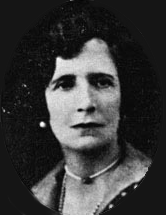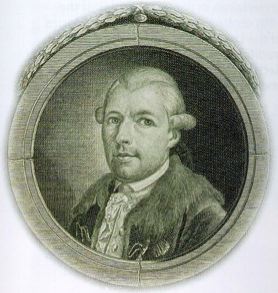
A conspiracy theory is an explanation for an event or situation that asserts the existence of a conspiracy by powerful and sinister groups, often political in motivation, when other explanations are more probable. The term generally has a negative connotation, implying that the appeal of a conspiracy theory is based in prejudice, emotional conviction, or insufficient evidence. A conspiracy theory is distinct from a conspiracy; it refers to a hypothesized conspiracy with specific characteristics, including but not limited to opposition to the mainstream consensus among those who are qualified to evaluate its accuracy, such as scientists or historians.

The Illuminatus! Trilogy is a series of three novels by American writers Robert Shea and Robert Anton Wilson, first published in 1975. The trilogy is a satirical, postmodern, science fiction–influenced adventure story; a drug-, sex-, and magic-laden trek through a number of conspiracy theories, both historical and imaginary, related to the authors' version of the Illuminati. The narrative often switches between third- and first-person perspectives in a nonlinear narrative. It is thematically dense, covering topics like counterculture, numerology, and Discordianism.

Skull and Bones, also known as The Order, Order 322 or The Brotherhood of Death, is an undergraduate senior secret student society at Yale University in New Haven, Connecticut. The oldest senior-class society at the university, Skull and Bones has become a cultural institution known for its powerful alumni and various conspiracy theories. It is one of the "Big Three" societies at Yale, the other two being Scroll and Key and Wolf's Head.

Milton William "Bill" Cooper was an American conspiracy theorist, radio broadcaster, and author known for his 1991 book Behold a Pale Horse, in which he warned of multiple global conspiracies, some involving extraterrestrial life. Cooper also described HIV/AIDS as a man-made disease used to target blacks, Hispanics, and homosexuals, and that a cure was made before it was implemented. He has been described as a "militia theoretician". Cooper was killed in 2001 by sheriff's deputies after he shot at them during an attempted arrest.

Hundreds of conspiracy theories about Freemasonry have been described since the late 18th century. Usually, these theories fall into three distinct categories: political, religious, and cultural. Many conspiracy theories have connected the Freemasons with worship of the devil; these ideas are based on different interpretations of the doctrines of those organizations.

Nesta Helen Webster was an English author who revived conspiracy theories about the Illuminati. She claimed that the secret society's members were occultists, plotting communist world domination, through a Jewish cabal, the Masons and Jesuits. She blamed the group for events including the French Revolution, 1848 Revolution, the First World War, and the Bolshevik Revolution. Her writing influenced later conspiracy theories and ideologies, including American anti-communism and the militia movement.
David Southwell is a British writer, and the author of several books on conspiracy theories and organized crime. He has also written scripts for Independent British comic books.
The most royal candidate theory of Harold Brooks-Baker proposed that the winning candidate in United States presidential elections had always been the candidate with the greatest percentage of "royal blood" in his pedigree, and this pattern could be used to predict the outcome of upcoming elections. Brooks-Baker promoted it during several election cycles, ending with the 2004 presidential election, the last before his death.
William James Guy Carr was an English-born Canadian naval officer, author, and conspiracy theorist.

Founded by Adam Weishaupt in Bavaria in 1776, the Illuminati have been referred to in popular culture, in books and comics, television and films, and games. A number of novelists, playwrights and composers are alleged to have been Illuminati members and to have reflected this in their work. Early conspiracy theories surrounding the Illuminati have inspired various creative works, and continue to do so.
The Realist was a magazine of "social-political-religious criticism and satire", intended as a hybrid of a grown-ups version of Mad and Lyle Stuart's anti-censorship monthly The Independent. Edited and published by Paul Krassner, and often regarded as a milestone in the American underground or countercultural press of the mid-20th century, it was a nationally-distributed newsstand publication as early as 1958. Publication was discontinued in 2001.

The Illuminati is a name given to several groups, both real and fictitious. Historically, the name usually refers to the Bavarian Illuminati, an Enlightenment-era secret society founded on 1 May 1776 in Bavaria, today part of Germany. The society's stated goals were to oppose superstition, obscurantism, religious influence over public life, and abuses of state power. "The order of the day," they wrote in their general statutes, "is to put an end to the machinations of the purveyors of injustice, to control them without dominating them." The Illuminati—along with Freemasonry and other secret societies—were outlawed through edict by Charles Theodore, Elector of Bavaria, with the encouragement of the Catholic Church, in 1784, 1785, 1787 and 1790. During subsequent years, the group was generally vilified by conservative and religious critics who claimed that the Illuminati continued underground and were responsible for the French Revolution.
Christopher L. Hodapp is an American author and filmmaker, noted for his writings about Freemasonry, fraternalism, the Knights Templar, secret societies and conspiracy theories. He is the founding editor in chief of the Journal of The Masonic Society, the Associate Director of the Masonic Library and Museum of Indiana, and Public Relations Director for the Grand Lodge F&AM of Indiana.
Black reconnaissance or BRCON is a term describing military deep penetration reconnaissance of a completely covert nature. It is distinct from normal forms of covert recon in that discovery of the action would be so disruptive to relations between two countries that the instigators would be disavowed if caught.
Lamar Waldron is an American writer and historian who often writes about conspiracies and cover-ups.

Andrzej Marecki was a Polish military officer. He was a colonel in the Polish Army, lecturer in tactics and member of the Polish General Staff during World War II. He died in the controversial 1943 Gibraltar B-24 crash.
Conspiracy theories in United States politics are beliefs that an event or situation in US politics is the result of secretive collusion by powerful people striving to harm a rival group or undermine society in general.
The international Jewish conspiracy or world Jewish conspiracy has been described as "the most widespread and durable conspiracy theory of the twentieth century" and "one of the most widespread and long-running conspiracy theories". Although it typically claims that a malevolent, usually global Jewish circle, referred to as International Jewry, conspires for world domination, the conspiracy theory's content is extremely variable, which helps explain its wide distribution and long duration. It was popularized in the late nineteenth and early twentieth century especially by the antisemitic forgery The Protocols of the Elders of Zion. Among the beliefs that posit an international Jewish conspiracy are Jewish Bolshevism, Cultural Marxism, Judeo-Masonic conspiracy theory, White genocide conspiracy theory and Holocaust denial. The Nazi leadership's belief in an international Jewish conspiracy that it blamed for starting World War II and controlling the Allied powers was key to their decision to launch the Final Solution.









